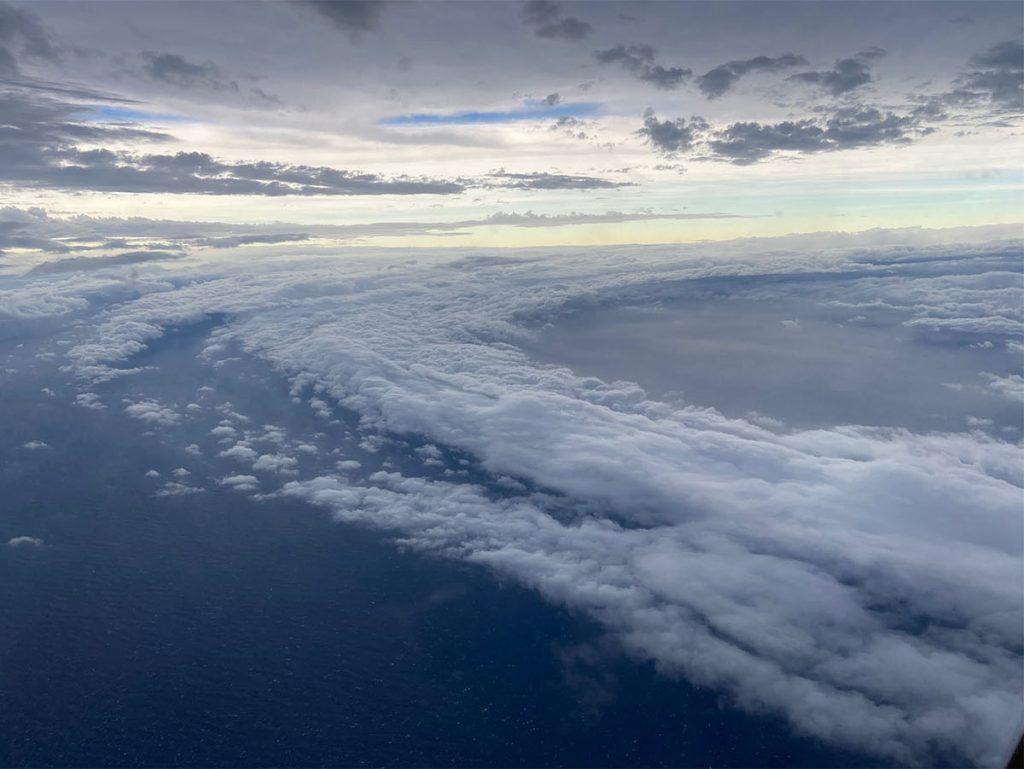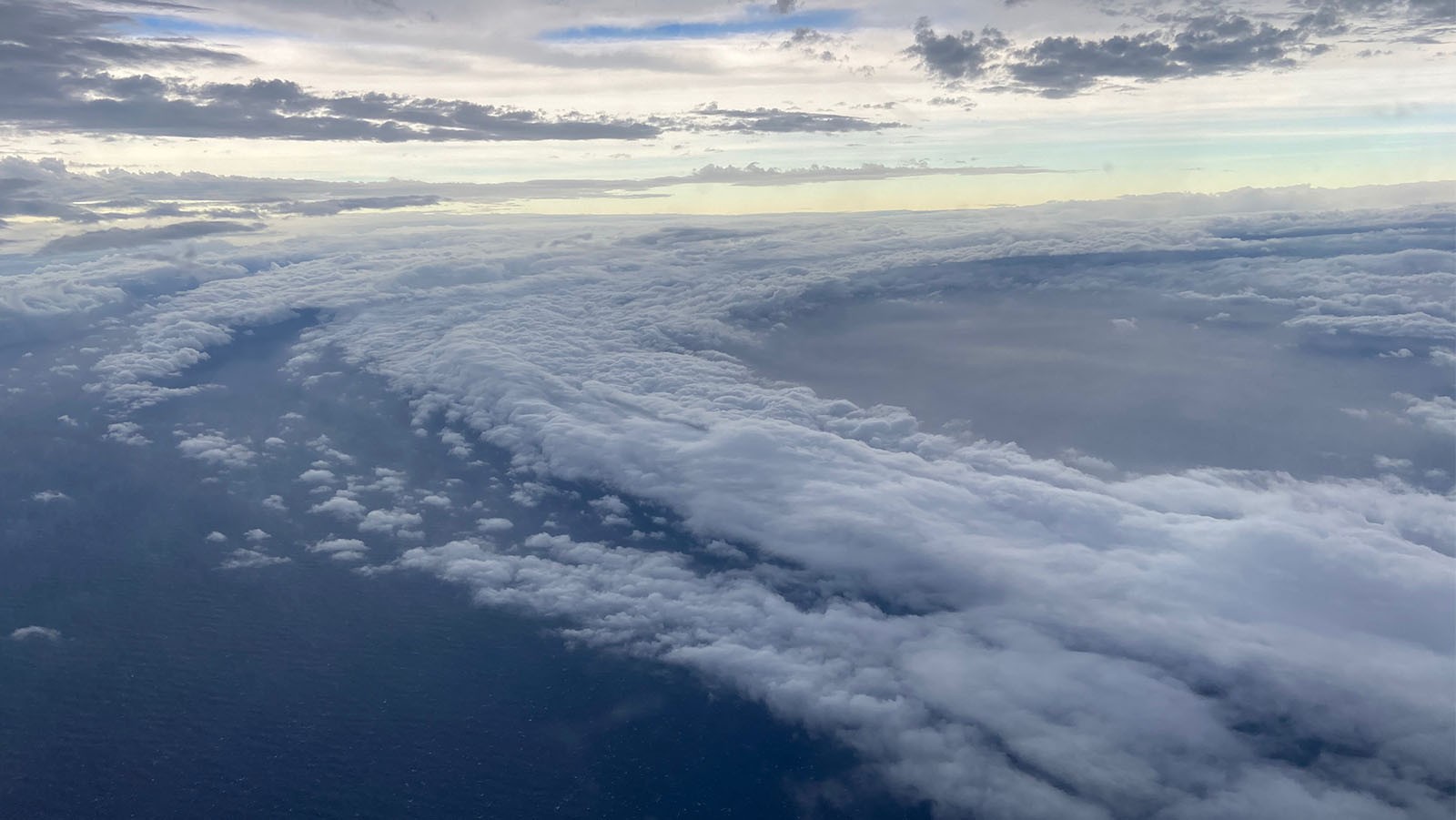NOAA’s most recent P-3 mission provided scientists and forecasters with measurements indicating that Tropical Storm Isaias maintains its strength as it contends with an environment that is unfavorable for development. Scientists processed these data in real-time, and weather models used these observations to improve forecast performance.
NOAA Hurricane Hunters took off at 5:00 PM EDT Sunday, August 2 from Lakeland, Florida for ongoing Environmental Modeling Center (EMC) tasked reconnaissance into Isaias. This flight is focused on obtaining symmetric measurement coverage of the tropical storm to assess the system’s current characteristics. NOAA’s missions are expected to continue through Monday morning prior to the potential landfall of Tropical Storm Isaias.
The winds around the storm change drastically with height, often referred to as vertical wind shear. This has forced dry air into the circulation trapping the thunderstorms and rain to one side of the storm. The thunderstorms are likely being maintained by very warm sea surface temperatures.
The National Hurricane Center (NHC) official forecast for Isaias discusses the possibility of the system regaining hurricane status prior to landfall. Watches and Warnings have been issued along the SE coast, and NHC predicts a potential for severe weather and destructive flooding from the Carolinas to the northeast.
As airborne P-3 instrumentation collects observations, NOAA scientists can better understand the processes resulting from Isaias’ interaction with vertical wind shear and dry air.
Photographs of cloud structures within Isaias’ circulation aid in interpreting the measurements acquired from dropsondes, tail-Doppler radar, and other onboard sensors.

For the latest information about tropical cyclones and other weather systems, visit the NOAA National Weather Service National Hurricane Center.
For information on numerical prediction of tropical cyclones, visit the NOAA National Centers for Environmental Prediction Environmental Modeling Center.
